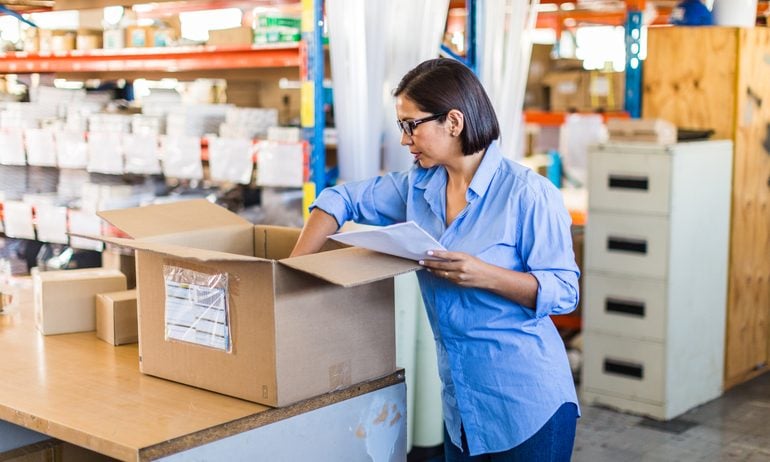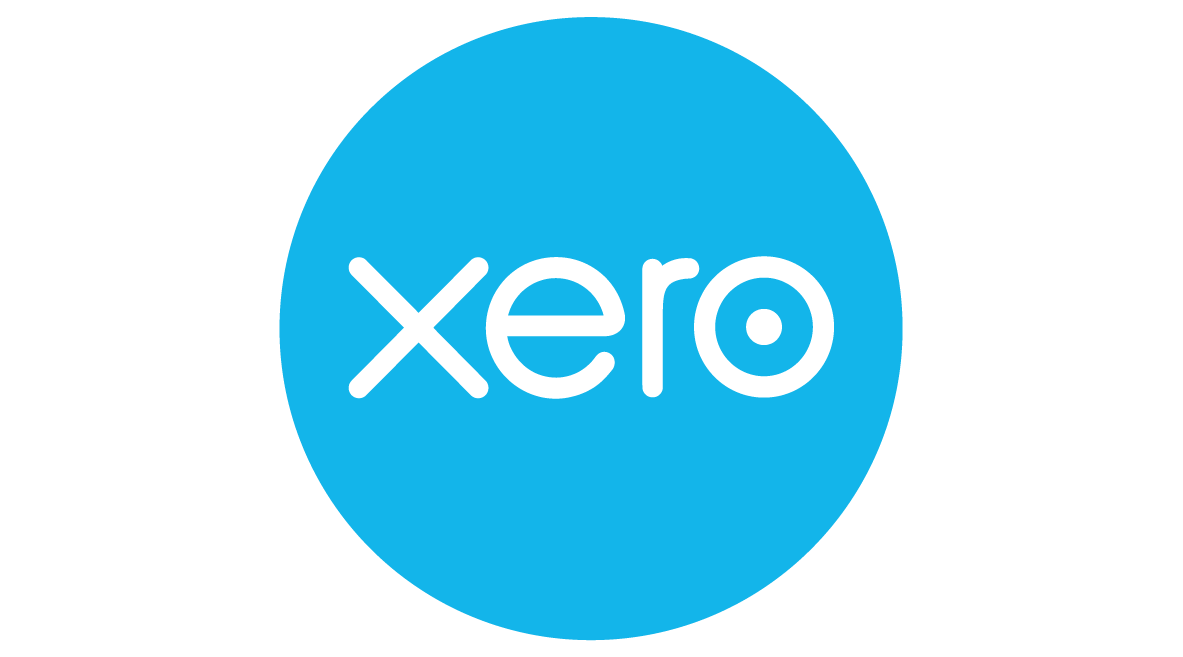5 Ways to Control Your Inventory So It Doesn’t Control You
Inventory management tactics include sticking to certain themes, doubling down on reliable inventory and getting to know your supply chain.

Many, or all, of the products featured on this page are from our advertising partners who compensate us when you take certain actions on our website or click to take an action on their website. However, this does not influence our evaluations. Our opinions are our own. Here is a list of our partners and here's how we make money.
Managing inventory is a task that can make or break your small business. With too much inventory, profits suffer and storerooms overflow. With too little, items get back-ordered, customers get frustrated and business is lost. And striking a balance is hard, especially with disruptions to the global supply chain in the last few years causing delayed deliveries.
While you can’t control the supply chain, you can take steps to prevent common problems like product shortages and excess stock. Here’s how.
1. Stick to the story
Donna Daniel owns and operates three connected small businesses in Claremont, California: The Grove Clothing, The Grove Home and The Outdoor Store, which sell women’s clothing, home goods and unisex adventure-themed gear, respectively. To run all three of her stores, Daniel needs to keep an impressive variety and quantity of inventory in stock — and ensure it moves quickly to make room for seasonal items and new shipments.
To keep her inventory cohesive within each store, she arranges it in themed displays — or what she calls “stories” — which tie together dozens of different items to appeal to a color, season or activity.
“I don’t buy anything outside of the stories,” she says, which helps her collect data on sales and seasonal trends, and keeps her stock to what’s most likely to sell.
She keeps most of her inventory on the shop floor, with stock in each store’s backroom and larger items in a nearby storage unit. In the backrooms and warehouse, she stores items according to product type and size — not by story — so employees can easily restock displays and substitute a similar item if necessary.
2. Double down on your reliable inventory
“Just-in-time inventory is much more difficult to do today,” says Mark Baxa, president and CEO of the Council of Supply Chain Management Professionals, a global trade association for supply chain professionals. Baxa adds that since the supply chain is less stable than it was pre-pandemic, businesses may need to lean on their most reliable products and vendors.
Courtney Cowan, owner and founder of Los Angeles bakery Milk Jar Cookies, keeps supply needs and consumer demand stable with a very consistent product line. Her 16-flavor menu has “changed very little” in the bakery’s nine-year history, though she leaves room for a rare seasonal standout to join the rotation. Since her store pre-mixes and preserves dough in a deep freezer, she can ensure that her bestsellers are always in stock.
Though some businesses may prefer a bit more variety, in uncertain times — over-ordering on go-to products with a dependable profit margin can help fill the gaps and keep sales steady.
3. Keep products moving
Longtime retailers know that while running out of inventory is bad, having too much can be worse. “Too much backstock eats up all your capital,” Daniel says. She prevents this from happening by planning ahead and using sales sections to make room for new merchandise.
Daniel reorders seasonal inventory as far as a year ahead by using recent sales reports as a baseline. But with this commitment to hundreds of new products arriving every month, she makes sure that items don’t sit on shelves for more than a few weeks.
“I do not like merchandise hanging around,” she says, explaining that if an item isn’t clearing out quickly enough, she’ll move it to the sales rack and discount it until it’s gone.
Though selling an item for a fraction of its original price may seem painful, it may be worth doing to keep inventory moving and keep customers coming back for new products.
4. Get to know your supply chain
Especially in periods of supply chain disruption, getting to know your vendors can make a big difference in your day-to-day operations. “Hold your supplier base accountable,” Baxa says. He suggests finding the “shortest path” possible, including finding local and sustainable suppliers, to help ensure consistent, reliable supply.
Daniel follows the same principle, sourcing her inventory from mostly local vendors so she can pick up items instead of shipping. She weighs several factors, including production time, available quantity and shelf life to figure out how much to order and how often.
Cowan’s inventory is perishable, so she needs her wholesale ingredients to arrive on a tight schedule. Her bakery receives truck deliveries directly from the restaurant supplier Sysco and wholesale store Costco, which keeps her supply chain close to home.
“We keep it as centralized as possible,” Cowan says. For special ingredients like nuts and candy, she places advance orders with small online vendors.
Clear communication with vendors can help business owners figure out limitations, plan ahead and mitigate risk.
5. Use a point-of-sale system with inventory management tools
For the past five years, Daniel has been using Lightspeed, a POS system with standout inventory management tools. The software can track her inventory across all three of her stores, and it generates reports that help her analyze seasonal sales data and follow her businesses’ growth.
This data is essential for her to plan reorder points and determine which items will reliably sell. Especially with a small staff and multiple locations, an all-in-one POS system can help minimize costs and labor.
Best POS for inventory management
Lightspeed Retail POS
Cost: Software $69 per month (billed annually) and up. Hardware quote-based.
Lightspeed’s retail point-of-sale system is built for inventory management. It can keep detailed records of your products across multiple locations and set automatic reorder points, so you don't run out. The software also offers employee and customer relationship management tools, as well as advanced analytics features on its higher-priced plans.
You have the option to use a third-party payment processor, or Lightspeed’s in-house processor with per-transaction fees at 2.6% plus 10 cents for swipe, dip and contactless payments and 2.6% plus 30 cents for keyed-in transactions.
Square for Retail
Cost: Software free and up. Hardware from free card reader to $799 terminal and up.
Square’s retail-specific POS software offers inventory management tools and multi-location capabilities as well. The free version has a variety of other useful features including reporting tools, customer and employee management. Email marketing, loyalty programs and payroll are available with a higher-priced plan or as a paid add-on.
Though its inventory management isn’t quite as deep as Lightspeed’s, Square’s user-friendly interface and accessible pricing make it a great choice for most retail businesses. Payment processing fees vary per plan, but with the free retail plan, costs are 2.6% plus 10 cents per in-person transaction, 2.9% plus 30 cents per online transaction and 3.5% plus 15 cents per keyed transaction.
Shopify POS
Cost: Software $29 to $299 and up. Hardware $49 and up.
Shopify’s point-of-sale system is geared for businesses that primarily sell online. The software tracks inventory, hides out-of-stock products on your website and offers basic inventory analysis. It also facilitates drop-shipping, curbside pickup and local delivery options, plus access to vendors and third-party applications.
Shopify helps businesses manage inventory across online and in-store locations. Its Pro version can create purchase orders, run inventory counts, perform advanced inventory analysis and generate low-stock reports. However, it’s not ideal for a business that only sells in store. Payment processing varies by plan, with in-person fees starting at 2.4% with Shopify POS Lite.
| Product | Starting at | Promotion | Learn more |
|---|---|---|---|
 QuickBooks Online NerdWallet Rating Learn more on QuickBooks' website | $35/month Additional pricing tiers (per month): $65, $99, $235. | 50% off for first three months or free 30-day trial. | Learn more on QuickBooks' website |
 FreshBooks NerdWallet Rating Learn more on FreshBooks' website | $21/month Additional pricing tiers (per month): $38, $65, custom. | 70% off for 4 months. 30-Day Money Back Guarantee. | Learn more on FreshBooks' website |
 Xero NerdWallet Rating Learn more on Xero's website | $20/month Additional pricing tiers (per month): $47, $80. | 90% off for 6 months. | Learn more on Xero's website |
 Zoho Books NerdWallet Rating Learn more on Zoho Books' website | $0 Additional pricing tiers (per month): $20, $50, $70, $150, $275. | 14-day free trial of the Premium plan. | Learn more on Zoho Books' website |

